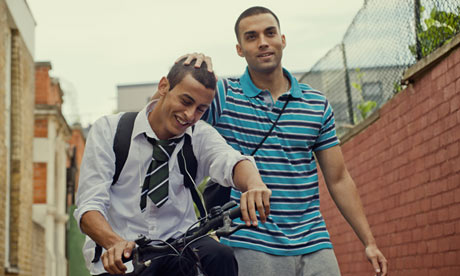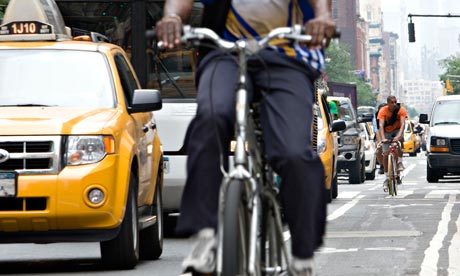After buying tickets to see Sherman Alexie a few months ago, I went on a bit of a binge. I'd devoured his famous
The Absolutely True Diary of a Part-Time Indian several years before, and now scoured the library's catalog and put holds on everything I could find. I ended up reading another young adult novel called
Flight, which I enjoyed very much though it was no
True Diary, and two short story collections all in a row. I find his writing clever, tender, and insightful, and I was excited to hear him speak, as the interviews I've read have been fascinating. I was so taken with the idea of seeing Alexie that I scarcely noticed Lorrie Moore's name on the ticket as well. The only reason she registered at all was that I'd seen one of her books while browsing through a bookstore ages before and thought it looked interesting. Well, this would be a good opportunity to read it, I reasoned.
I read Moore's acclaimed
A Gate at the Stairs while I was home for Christmas, meaning that I got through it much more quickly than I usually finish novels these days. My rapid pace was due, not to absorption in the story, but to a desire to be done with the damn thing so I could start something I liked better. I continue to wonder what everyone else sees in this book that I'm missing. It sold widely and was a finalist for both the PEN/Faulkner Award and the Orange Prize, but I found the story dark without redeeming qualities and heartily disliked its apathetic, dull protagonist.
Our intrepid Symphony Space host B.D. Wong kicked of the evening by warning the audience that if they planned to shock everyone with their own nudity like last time, they should let him know so he could help them at least spread their message a bit more effectively, then made the apt and humorous observation that a radio show was a poor venue for sudden bouts of toplessness designed to shake the public to its core. Those of us who had been in attendance
two weeks before laughed with the pride of insiders. He then introduced Alexie and Moore, who have apparently known each other for a long time and are both very fond of Wong. They were clearly very comfortable with each other and seemed somewhat amused by the prospect of jointly hosting an evening in front of an eager audience. Alexie launched into a series of one-liners the moment his feet (shod in rather striking two-tone dress shoes) hit the stage. He wore a grey suit with a plain sweater vest and tie, and his hair was a bit shaggy. I liked him immediately. His round face beamed in a friendly, open way, and he defied every stereotype I've heard (and sometimes seen confirmed) about authors who are better with their keyboards than they are with people. I'd like to play board games with this guy. Moore has long, straight, dark hair and dark framed glasses. She wore a black skirt, black sweater, black tights, and black boots. She, too, was funny, but in a quirky way that seemed almost a bit awkward. I decided I'd be less excited about having her for game night.
First, we were treated to two performances of Alexie's stories, one by Cynthia Nixon and one by Amber Tamblyn. I'd read both stories and enjoyed hearing them immensely. Alexie and Moore had both exited the stage to come sit at the very edge of the front row during the readings, and I enjoyed sneaking peeks at Alexie's face when Nixon or Tamblyn said something especially funny or poignant. He smiled beatifically and thanked each actress after they'd finished. Moore, apparently, has a reputation for being quite a funny writer, and while I didn't see it in
Gate, her humor was clearly apparent in her story "The Juniper Tree" which will appear in a story collection she plans to release next year. The story was still dark and the protagonist still (in my opinion) quite unlikable, but actress Jill Eikenberry was hysterical and even performed one character's ludicrous song with perfect deadpan solemnity. Alexie threw his head back and roared at points, and even Moore, who has no doubt read this thing a thousand times, seemed unable to hold it in.
 |
| "For Beth, Here at Symphony Space" |
The final event of the evening was a conversation between the two authors who perched rather awkwardly on stools (note to self: if invited to partake in a discussion at Symphony Space, wear pants) and looked at each other a bit sheepishly. It was clear that neither of them had prepared any remarks or questions, and the fact that the two have a standing friendship dashed any chance there may have been of a serious literary discussion taking place. I did learn that while Moore is a very slow "book-a-decade" type and works on one project at a time, Alexie always has numerous projects going at once (so that, he explained, if he gets stuck on one he can just move to another, which means he's constantly starting things and never finishing them and has a number of outstanding books for which he's already been paid advances). I also learned that Moore's first published work was a piece she sent to a writing contest at
Seventeen Magazine. It won first prize, and because it was the first thing Moore had ever attempted to have published, she was filled with confidence and proceeded to send the magazine everything else she wrote for the next year or two. They never got back to her. Both shared lots of rejection stories, one of which involved a letter to Alexie from a publication (
The New Yorker?) that mistakenly included the editors' unadulterated opinions about his story, i.e. the ones he wasn't supposed to know about. One of the editors wondered why Alexie had a career. Ouch. You always hear about how even great authors get rejected constantly, but it was nice to hear them describing this first-hand.
.JPG) |
| I made a crack about how long the title of his book was and how little space that left him for signings. My message reads, "For Beth, for shaming me about the space available." |
For the first time, I was not nervous to approach an author for an autograph - Alexie because he seemed so personable and Moore because I wasn't that blown away by her. Alexie joked with me, and Moore observed that I had a British edition of the book (I did?) and we talked briefly about the cover. I will definitely be on the lookout for additional opportunities to see Alexie. I think I'll save my money when it comes to Moore, however. New York is an expensive place.





























.JPG)














.JPG)